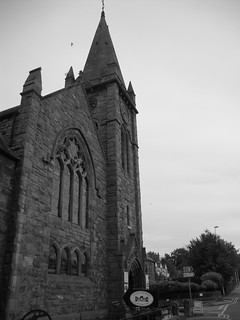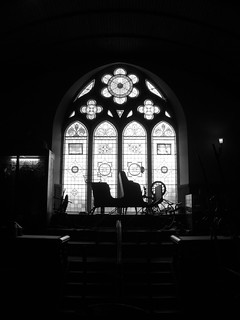 Should you ever have occasion to find yourself in the Morayshire town of Fochabers – and frankly why wouldn’t you? – then you will find yourself drawn to its folk museum. Frankly, other than a garden centre there’ll not be a lot else to grab you.
Should you ever have occasion to find yourself in the Morayshire town of Fochabers – and frankly why wouldn’t you? – then you will find yourself drawn to its folk museum. Frankly, other than a garden centre there’ll not be a lot else to grab you.
Residing in a converted church, Fochabers Folk Museum and Heritage Centre is a curious jumble, an Aladdin’s cave of bizarre and diverse artefacts that for all their disjointed presentation really do paint a vivid and informative picture of the town and make you realise that there’s more to it than meets the eye.
The museum all the more remarkable for the fact that it is entirely volunteer-run, putting many professionally-staffed museums to considerable shame.
Once you get over the rather loaded, in-your-face layout and try to see the wood through the trees – from an olde worlde recreated shop, a collection of old chemist bottles, old agricultural equipment, or a random collection of 1950s dresses – you get a sense of some interesting sides to the town.
In an hour or so’s browse around, for instance, I discovered that the museum has its very own bomb – a World War 2 piece discovered in 2001 in the river Spey. The town is also the birthplace of apparently one of the greatest composers of traditional music in Scotland, who has a walking trail in the area named after him.
Oh yes, and then there’s the fact that the entire town actually moved location in the eighteenth century.
The original village sat rather inconsiderately right on the doorstep of Gordon Castle, the seat of the Dukes of Gordon. It would have been a less than plush settlement and thus a bit of a crimp on the style of the duke of the day. So in 1776 a new town was built – providing better quality accommodation for residents at a much more tolerable distance from the duke’s castle.
The result is an outstanding example of an early planned town, a conservation area with streets that are wide and regular, and which boast various grand and noble names that reflect the various aristocratic connections. The new town would have been a considerable improvement for those living there, though, and the museum explores many aspects of the carefully planned construction.
 Ironically, the castle fell into some considerable disrepair over the years, and little of the original structure remains. All that is left is part of the castle, newer buildings, and an apparently impressive walled garden.
Ironically, the castle fell into some considerable disrepair over the years, and little of the original structure remains. All that is left is part of the castle, newer buildings, and an apparently impressive walled garden.
While the museum is thorough and detailed, it boasts some oddities and rather nonsensical parts to the museum. For instance, the upper floor – an impressive feat in itself for a converted church – a large collection of old horse-drawn gigs is accompanied by some curious other artefacts. Such as a collection of typewriters, a dead lion or a stuffed seal and some old bedpans.
Because what else would you put there, after all?
However, these one or two moments of eccentric, almost careless presentation in the museum actually add to its charm rather than undermine it, reminding the visitor of the all the more impressive achievement that this volunteer-led enterprise represents.
The museum may lack some of the planning that went into the new town of Fochabers, but it has a whole heap more charm. If you’re in the area, do drop in. It’s infinitely better than the garden centre for a start.
Here are some photos from my visit.


